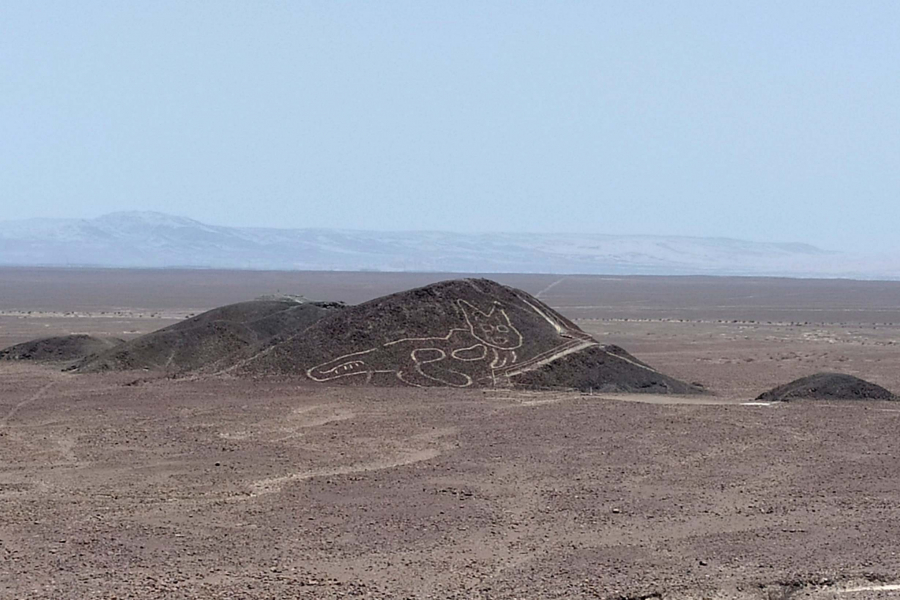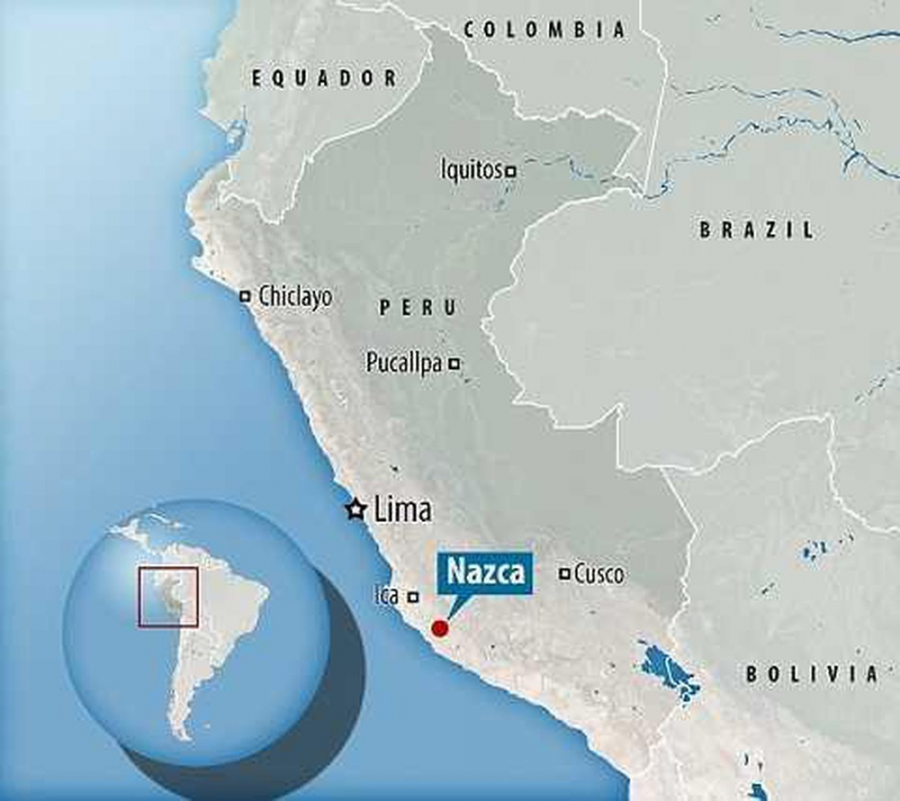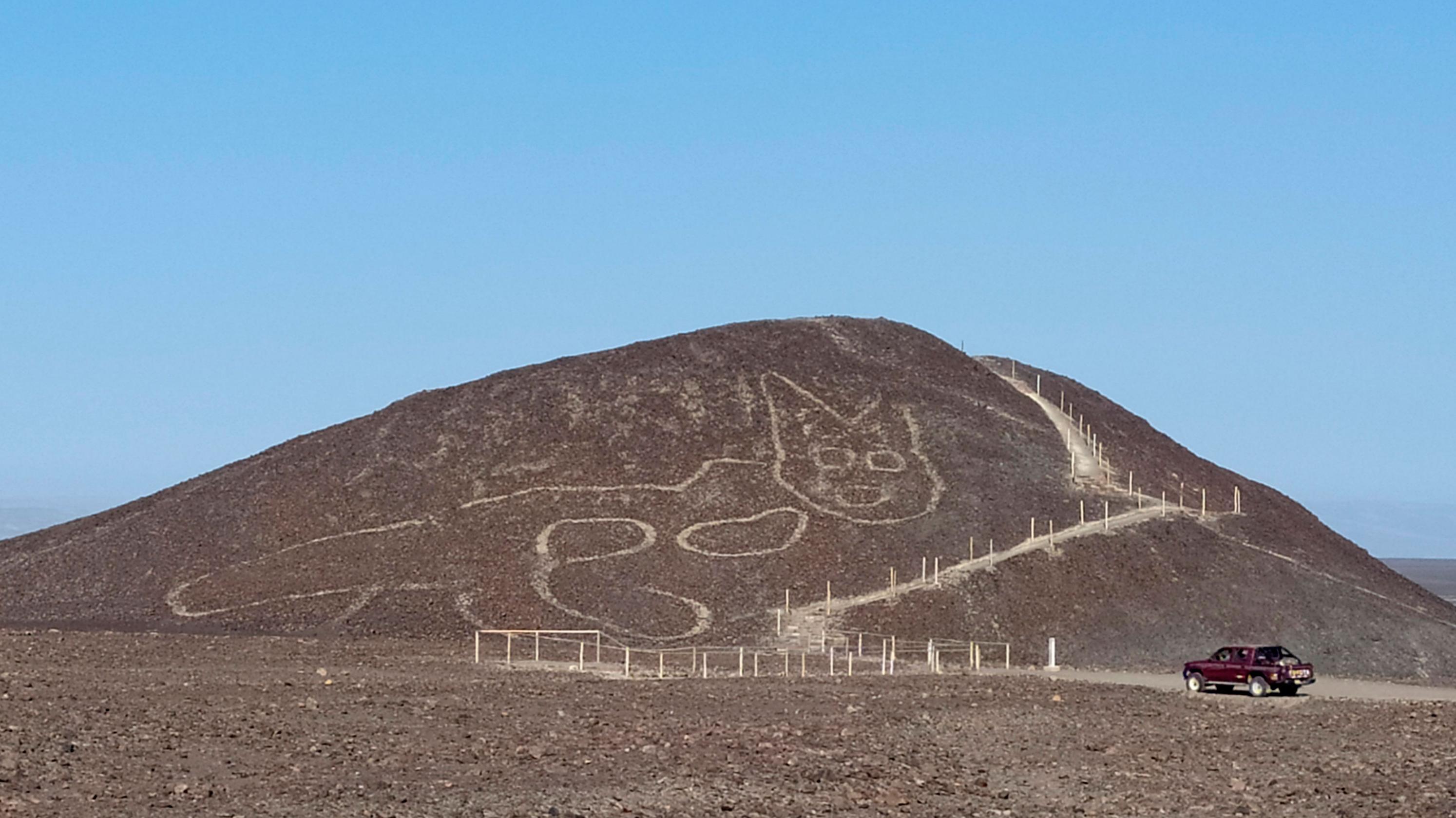Recently, archaeologists continue to discover ageoglyph(giant drawing on the ground) on a hill in Peru, next to the Pan-American Highway (connecting Alaska to Argentina).

Archaeologist Jhonny Isla said the figure was found during work to improve access to a tourist attraction that allows visitors to see the giant Nazca lines in the Peruvian desert.
"It's amazing that new geoglyphs are still being found, but we believe there are more to come," said Isla, who is in charge of the Nazca-Palpa Archaeological Park's management system. "Over the past few years, the use of drones has allowed us to take photographs on the hillsides, making searches more and more feasible."
Officials dated the archaeological specimen to around 200 BC. "We know this by comparing symbols. Similar bird, cat and human figures were common in the Paracas culture, which lasted from 500 BC to 200 AD," Mr. Isla said.

Last November, more than 140 Nazca lines dating back some 2,100 years were discovered in the Peruvian desert, the result of a 15-year research effort using satellite imagery, drones and AI scanning systems by archaeologists at Japan's Yamagata University.

Location of Nazca lines on map of Peru
The Nazca Lines - a UNESCO World Heritage Site - were first discovered by archaeologists in 1927. Many of the drawings are so large that they can only be seen in full from the air. Experts believe the lines - created by removing black rock to reveal the lighter sand underneath - were used in rituals, as messages to the gods.



































